Today, sweeping robots are not new faces for the public, but they are not old faces, because it is still in a period of rapid development in recent years: from the "foreign concept" of the technical image at the beginning to the initial entry of products The "luxury goods" in the domestic market, to the "dry middle school" with continuous optimization of performance, to the "grounding gas" with relatively close price, is now developing in the direction of "cool 拽" and "connotation". It can be said that the sweeping robot has been trained to become the vanguard in the ranks of family service robots.
Washing clothes, cooking, cleaning, these three things have become the most unpopular things modern people do. Fortunately, human beings are smart enough to find opportunities from "lazy". The vacuum cleaner invented in the early 20th century has saved a lot of work for cleaning. In 1901, British civil engineer Booth observed that the dust removal method of the American car dust collector using compressed air to blow dust into the container is not very clear. Instead, he tried to use a powerful electric pump to draw air into the hose and filter the dust through the bag. Later, he used this vacuum method to make a vacuum cleaner, set up the company and applied for a patent.
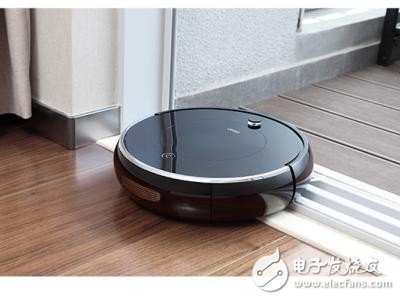
"Century baton" handed over from the vacuum cleaner
Since then, Europe and the United States, Hoover, Electrolux, Dyson and other electrical tycoons have spent nearly a hundred years, starting from the vacuum cleaner's nozzle, to the vacuum pump, and then to the motor, ash box, filter and other components, take turns Research and upgrade the vacuum cleaner. Until 1996, in the British BBC's section called "Tomorrow World", the host thought about how the future housewives used technology to deal with various household chores, and the smart sweeping robots began to appear.
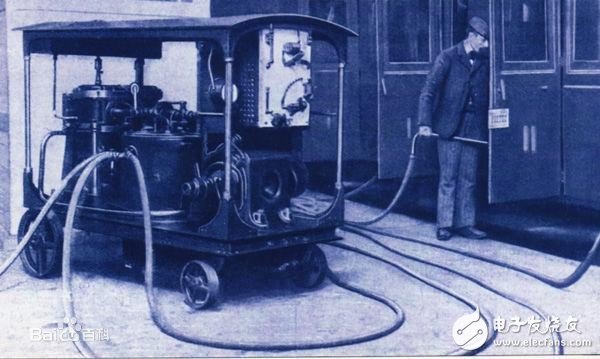
Horizontal can type vacuum cleaner
In the 1980s, SANYO began research and development of self-cleaning robots. As a research pioneer of cleaning robots, it plays an irreplaceable role in promoting the development of cleaning robots. In 2001, the home appliance giant Electrolux launched the Trilobite intelligent sweeping robot, the world's first mass-produced intelligent sweeping robot. Its name is taken from every inch in the world. The ancient arthropods where the land once left footprints, the designer hopes that its trilobite intelligent sweeping robot can also pass through every floor of the world like a trilobite.
The body of the intelligent sweeping robot, the trilobite, has a round pie shape and a plastic outer casing. Relying on the single-chip microcomputer to control the bottom wheel autonomous action, there is a detachable roller brush and a light vacuum pump for cleaning. The sweeping method is mainly used for sweeping and sucking. The reflective ultrasonic sensor of the body device provides the robot with obstacle avoidance. When it has completed the cleaning task or the built-in NiMH battery is low, it will automatically return to the power supply for charging. When the trilobite's dust box is full, an alarm sound will be automatically sent to remind the user to empty. The robot is also equipped with a magnetic strip to limit its range of motion, avoiding entering the bathroom or falling off the stairs.
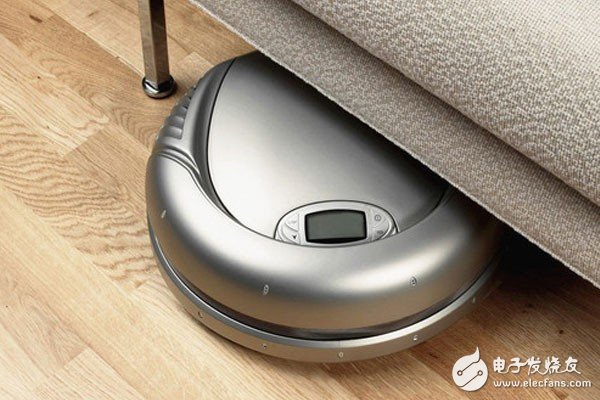
Trilobite intelligent sweeping robot
Although the users were very sought after for this revolutionary product, the picky users listed the trilobites. Collisions will still occur as it approaches an obstacle with a sharp corner. The reason is that in this case, the ultrasonic reflection has less energy and is difficult to detect. It is also unsightly to place a magnetic strip in a beautiful room (the magnetic strip is replaced by an infrared emitter in the second generation of Trilobite). But in any case, the round cake body, charging base and blocker have become the standard configuration of intelligent sweeping robots.
In March 2002, Matsushita Electric Industrial Co., Ltd. showed a vacuuming robot that automatically vacuums the house. It is slightly larger than a basketball, with small lights that look like eyes in the front and rear. It emits 50 kinds of sensing signals such as sound waves and infrared rays. These sensing signals allow the robot to automatically turn around before hitting an obstacle. After charging the robot, the working time can reach 55 minutes. When working, it walks around the room, calculates the size of the room, and then does horizontal and vertical movements for cleaning. The disadvantage is that the robot stops 6 inches before the obstacle and cannot clean the dust at the corner of the wall, making it impossible to clean the room thoroughly.
Roomba, a fully automatic intelligent vacuum cleaner jointly developed by iRobot Robotics of Massachusetts and the MIT Artificial Intelligence Laboratory, was launched in September 2002 and was named one of the coolest inventions of 2002 by Time magazine. Its operation mode is designed with the mathematical operation concept. When it starts, it will spirally run. During the work process, the cleaning range will gradually expand, eventually covering the entire space. When it hits a wall or other large obstacles, it will be loaded on the fuselage. The obstacle sensor adjuster protects the machine from damage while continuing to clean along the wall. When the vacuum cleaner cleans a part of the area, it will turn 90° and clean the other part of the room in the same way, and repeat the route of the spiral operation. In addition, the robot is able to detect dirt on the ground and can focus on cleaning according to the specific conditions of the floor of the room.
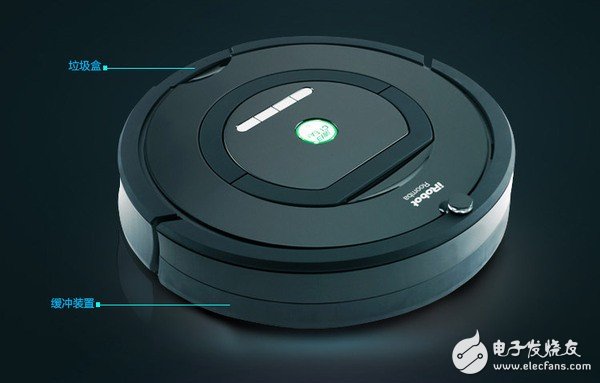
iRobot Roomba sweeping robot
This award-winning robotic vacuum cleaner has revolutionized the way people clean the floor. In 2004, iRobot introduced products with dirt detection and automatic charging. In 2005, iRobot released the Scooba robot for cleaning floors, which can clean hard floors, tiles, tarpaulins and more. In 2008, iRobot released the pet series. At present, iRobot's sweeping robot products can actively monitor the cleaning environment, think more than 60 times per second, and can react in 40 different actions.
Cleaning robots are special robots that serve humans and are an integral part of service robots. In fact, from the appearance and changes of vacuum cleaners, robot vacuum cleaners, sweepers, sweeping robots, cleaning robots, home service robots, etc., we can also see that the growth of sweeping robots has gone from simple to complex, from low-end to high-end. the process of. At the beginning, the sweeping robot was an upgraded version of the manual and semi-automatic vacuum cleaner. The self-moving, fully automatic vacuuming function meant liberating the human hands and represented an upgrade of the labor mode. Then, with the investment in research and development and related technologies, vacuuming is only a basic function.
From the introduction of the iRobot product line, we can understand that: the robot's "eyesight" is getting better and better - it can adapt to different room patterns and detect dirt; "legs and feet" are more and more adapted to the environment - cleaning the bottom of the sofa, the bottom of the bed The "means" are becoming more and more powerful - in addition to vacuuming, the dirt can be partially cleaned up repeatedly, and the corners, walls and furniture edges are not overlooked; "the mind" is getting smarter - It can easily get rid of obstacles such as wires and tassels and will not be entangled. With the three functions of perception, decision-making and execution, and the gradual improvement of the three functions, the sweeper has developed into a robot.
What are the "real skills" that the "leaders" have trained?
Sweeping robots are undergoing a transition from “functional machines†to “smart machinesâ€. Their intelligence is currently reflected in three aspects: the ability to draw room maps, positioning capabilities and navigation capabilities. Through these three skills, the sweeping robot can construct the map of the user's home while working, and then combine the positioning and navigation capabilities of the robot to effectively clean the room. Moreover, the more intelligent the sweeping robot is, the more intelligent it will be. Over time, it can accurately remember the user's home map. Based on this real-time updated map, the sweeping robot can know which areas have been swept and which areas have not been cleaned.
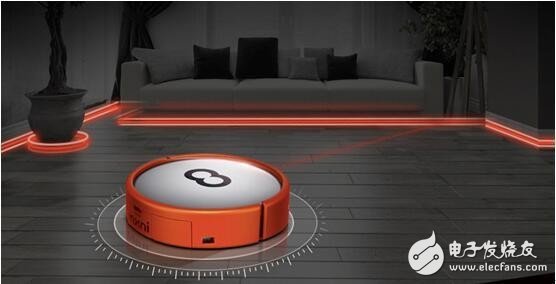
Ability to map room maps, location and navigation
The intelligence of moving the above three aspects of the sweeping robot is related to the "perception" function that the intelligent robot should have. In the past decade, the “perception†function of sweeping robots has been “evolvingâ€. In 2007-2012, the sweeping robots on the market mainly used infrared sensing. Its advantages and disadvantages are that the infrared transmission distance is far, but there is a very high requirement for the use environment. When it encounters a light or dark household item, it cannot be reflected back, which will cause the machine to collide with household items for a long time. The household items will be bumped by it. Since 2013, sweeping robots have gradually adopted ultrasonic bionic technology. Bionic ultrasonic technology, similar to whales and bats, uses sound waves to detect and judge household items and spatial orientation, with high sensitivity and high technical cost. There are systematic applications in the aviation industry. In recent years, the indoor laser navigation technology can be used to map indoor terrain layout to achieve a global accurate cleaning plan. At the same time, with infrared scanning technology and ultrasonic technology, the sweeping robot can avoid obstacles 360° and avoid random planning path sweeping. A chaotic scene appeared.
At present, the coverage rate of some domestic sweeping robots can reach more than 90%, far exceeding the average of 60% in previous years. In order to determine which areas need to be cleaned, some robotic vacuum cleaners have a dust sensor near the rotating brush, which is an acoustic sensor. When the blower lifts more dust, the dust hits the metal plate of the sensor, causing a large vibration. The sensor detects an increase in vibration and directs the robotic vacuum cleaner to clean the area again. When the cleaning plate of the robot cleaner (with the blower setting inside) senses that the floor surface is raised, it automatically adjusts its height to achieve the transition between different floor types.
The mopping robot is a research focus in the field of cleaning robots in recent years due to its late start and the difficulties in overcoming key technologies. The Scooba 390, a mopping robot developed by iRobot, is the world's first fully automatic washing robot, as shown in Figure 4. The robot uses a unique “four-stage cleaning system†to complete the cleaning task. The working process has four stages of preparation, watering, wiping and water absorption. The robot system has achieved the cleaning effect of integrating mopping, vacuuming and sterilization.
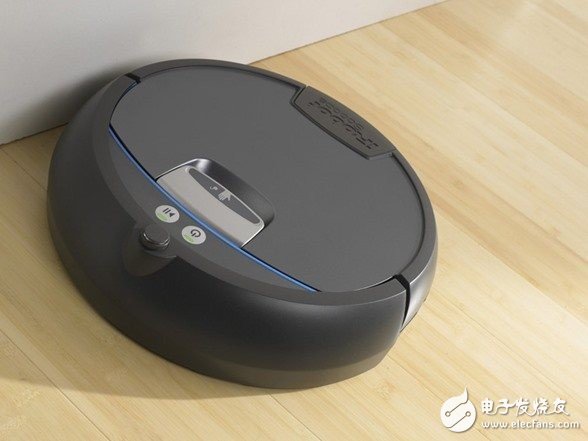
iRobo Scooba 390
The mopping robot is mainly for the ground that is relatively clean and does not need to be cleaned. The wiping method of the wiping robot can be divided into passive and active, and the main wiping method is passive. The passive wiping method can be described as: the mopping rag is fixedly mounted on the bottom end of the cleaning robot to ensure that it fits to the ground, and the rag wipes the ground as the robot moves. Since the wiping method is relatively simple, in general, the wiping robot is not independently designed as a robot. Therefore, the robot integrates the mopping function. A water storage plate is added above the rag. The difference between mopping the floor and wiping the ground is that it is no longer simply pushing the rag, but imitating the process of mopping the floor with the mop. Perform a reciprocating wipe. In addition, the wiping technique can be integrated on the sweeping machine.
The ability to clean the underside of the furniture is probably one of the biggest advantages of a robotic vacuum cleaner. The sweeping robot can be fully drilled under the furniture, which is not possible with people and upright vacuum cleaners. At present, the thinner model, the body is 6.8cm, the working height is only 8cm (the height difference of one centimeter in the robot vacuum cleaner industry, it is the investment of 10 million grades in the early stage), and it can easily drill to most coffee tables and bedside tables. The bed and some sofas underneath. In addition, some sweeping robots use motors with centrifugal impellers to clean at different speeds on carpets, floors, tiles, etc.; pet cleaning kits, including pet brushes and sensitive source filters with pleated design Designed for pets at home and reduces the annoyance of allergic patients. Some sweeping robots also support APP remote control. The cleaning map of the sweeping robot can be displayed on the mobile phone, and the cleaning area, cleaning time, etc. of the sweeping robot can be viewed, and the cleaning result can be seen at a glance. In addition, based on the sweeping function, “all-in-one†products also seem to be a new trend. Many brands have launched a sweeping and dragging product. At the same time, some manufacturers have also increased sales points such as UV disinfection, sterilization, air purification, video surveillance, etc., to promote the superiority of their products.
"Good soldiers" are also in the fine
Brian Joffson and McCafferty predicted in the Second Machine Revolution that "the first machine revolution partially replaced our body, and the second machine revolution partially replaced our mind." With the development of our society and the continuous improvement of the quality of life of residents, how to make life more comfortable and simple, which is highly praised by young users, is one of the main reasons for the explosive growth of sweepers in the past two years. The industry said that 2014 is the "first year of smart home", the consumption trend of smart home appliances and wearable devices suddenly hit, and the sweeping robot is one of the "leaders." At the beginning of the entry into the Chinese market, sweeping robots were expensive and had low penetration. After a few years of development, the domestic market was gradually opened.
According to relevant data, in the first half of 2016, sweeping robots have become one of the fastest and most popular appliances in smart home appliances. The proportion of domestic online sweeping robots reached 13.3% (sweeping robot sales/vacuum cleaner sales) ), and in 2015 this proportion was even less than 1%. In just one year, the penetration rate of domestic online sweeping robots has increased significantly. According to GFK data, the retail sales of China's sweeping robot market in 2015 is about 5 billion yuan, which will reach 7.5 billion yuan in 2017 and 12 billion yuan in 2018. The market for sweeping robots is huge.
The popularity of sweeping robots is accelerating, and its technology is constantly improving and maturing. Different from the main consumer selling points that serve large-scale European and American households and replace high labor costs, the function of sweeping robots in China is very fast, navigation positioning, automatic homing, anti-collision sensing, etc., has become an essential function of sweeping robots. . On the other hand, the user's need for more precise positioning, more efficient cleaning and quieter work decibels for sweeping robots has not been well met, so before the breakout period, the cutting-edge technology and grasping of the sweeping robot can be mastered. A brand that lives with users' pain points can become a true leader. The sweeping robot market belongs to the emerging product market, the brand ranking has not been stable, and the brands that enter later still have huge room for growth. In the future, there will be more traditional home appliance companies and Internet cross-border companies involved. It should be noted that although the transaction scale and penetration rate of China's sweeping robots are increasing year by year, there is still a big gap compared with developed countries in Europe and America. In particular, China's sweeping robots currently cover only the major first- and second-tier cities. In a wider space, the increase in permeability will take time.
The key is to make home robots more "intimate"
In general, the development of home robots in China is still in its infancy, and there are still many problems, such as high prices, low practicality, and inflexible operations. From the current situation, many home appliance manufacturers are enthusiastic about the production and application of robots, but the research and development of core technologies is still a serious injury. Most of them are wheeled mobile platforms, through the Internet and software programming, to achieve some simple and practical functions. Manufacturers should increase R&D investment and cooperation, and combine existing products and technological advantages to make home robots more "intimate."
First of all, the quality should be more reliable. Emphasis on brand building, strict quality control, focus on safety, reliability and system stability. You can't ignore "manufacturing" and jump directly to "intelligence." The follow-up of the Chinese people's crazy purchase of Japanese toilet covers is to expect an upgrade of the quality of domestic products, and it is not just a preference for multi-functional design. At the same time, companies cannot ignore the nature of their home appliances and avoid security incidents. At the same time, there is an urgent need to develop safety standards for home robots.
Second, the function is more practical. The key is to capture the needs of users, rather than to achieve multi-functionality for the competition between the industry peers. Currently, family intelligent robots in the market can be mainly divided into three categories: functional robots, social companion robots and bionic robots. For a sweeping robot, it’s not the user’s true love that dances well. The function is fancy, the gimmick is full, the practicality is not strong, then the home robot can only be reduced to a high-priced toy, which will make people look at their high prices and deterred. With the advent of China's aging population, manufacturers should also seize the important need of nursing robots to solve the problem of old-age care, and at the same time make the operation of robots more flexible.
In addition, it needs to be more human. In the future, we will gradually complete the integration of robot functions, develop towards a more "human" temperature, continue to research and develop innovation, and implement the three stages of "tool-manager-company companionship" for the transformation of home robots.
Under the open and networked development ideas, perhaps the day when the home robots sent us the courier for delivery, it will come soon!
Furniture Lights,Furniture Lighting,Furniture Cabinet Lights,Furniture Bedroom Lighting
Dongguan baiyou electronic co.,ltd , https://www.dgbaiyou.com
